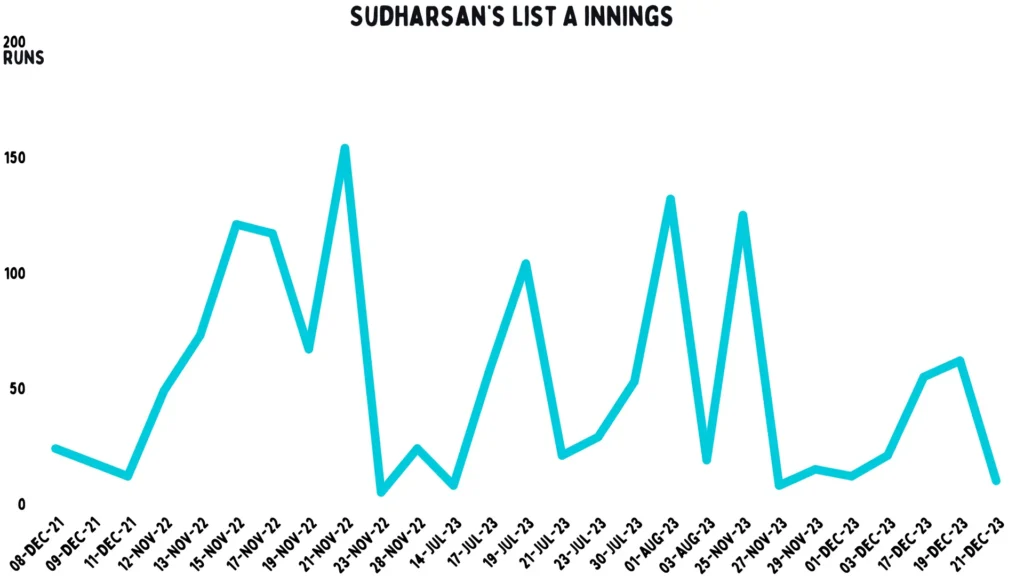Jarrod Kimber
Ishant Sharma appealed for an LBW, but it was pointless. Sai Sudharshan was the batter, and he hadn’t scored yet. There is almost no chance of this man losing his wicket without scoring. In his first 38 T20s, he has three single-digit scores. No one gets a start like him. He plays by his own rules.
A few balls later, he effortlessly places a couple of balls to the rope. It’s graceful and easy for him. He gets past ten runs again.
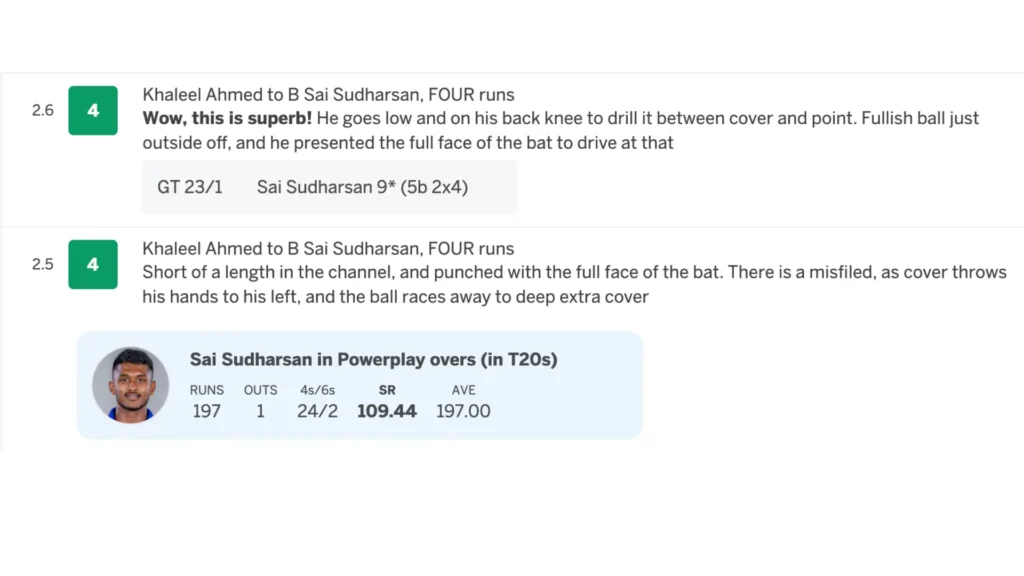
Usually, he eases into his 20s or 30s, but this time, he knocked the ball to mid-on and took on the fielder only to run himself out. No bowler could tame him, but running when the ball is next to the stumps is always dangerous. It was a failure, but he got his double figures.
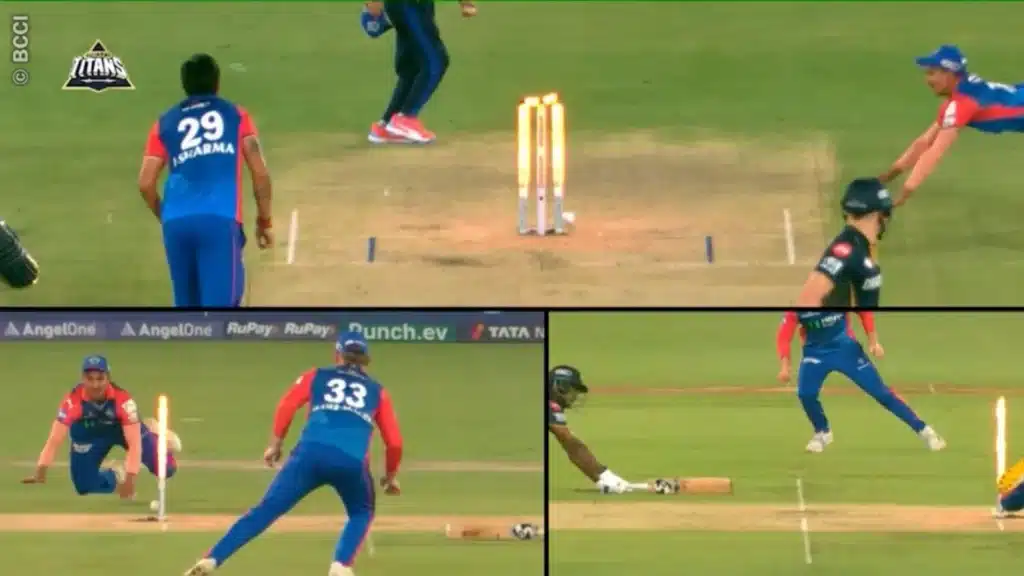
I am obsessed with Sai Sudharsan. He may be the most consistent player in the IPL – or any T20 cricket. I don’t know if I have ever seen anything like this at all. At the start of his career, he had one score in single figures, and even that was a nine. This is a batter who just walks out and scores runs every single time. There is one blip in his record; outside of that, he’s the most metronomic batter in T20s.
The question of whether that is a good thing or not can be long and painful. But Sudharsan is consistent. In a league where scores go up and down on moods or vibes, he is leading a one-man consistency revolution.
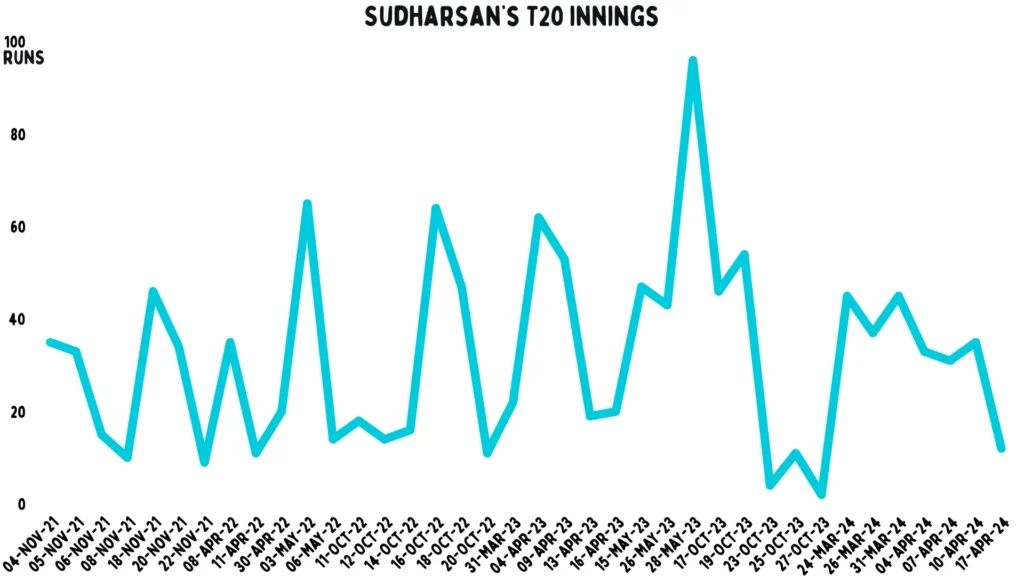
You might think his T20 numbers are a bit of a fluke, that in 38 matches, perhaps we could find something different if he’d played a lot. But his List A career suggests a similar pattern; in 28 matches, he has only three single-digit scores there as well.
His ability to get started in white ball cricket is incredible.
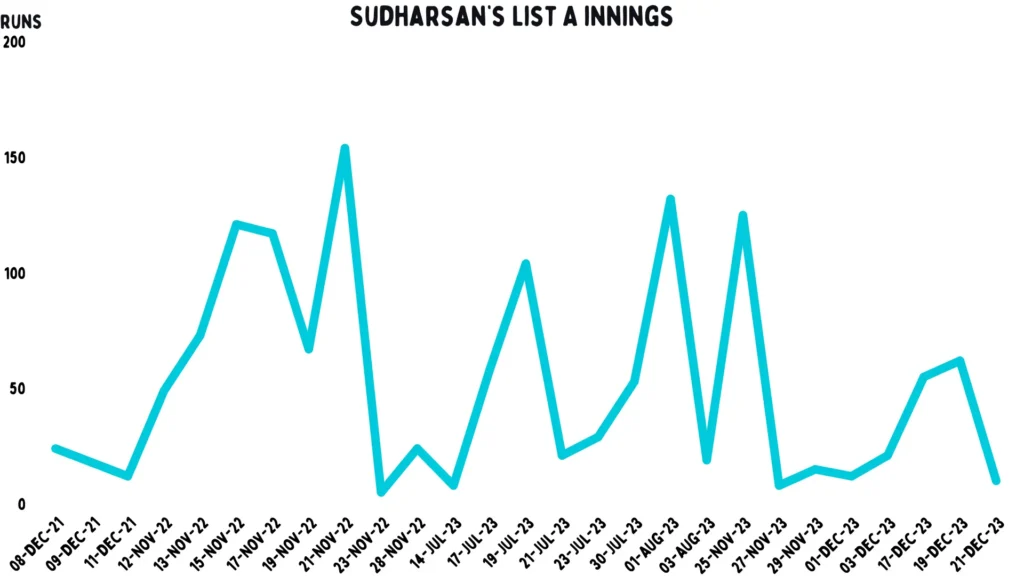
If you think it’s because he has slow starts, that would make sense, but he does not. He scores really quick early on and we see a lot of Indian anchors with this pattern. They put pressure on the bowlers early and then knock it around for ages.
But he also doesn’t stick around.
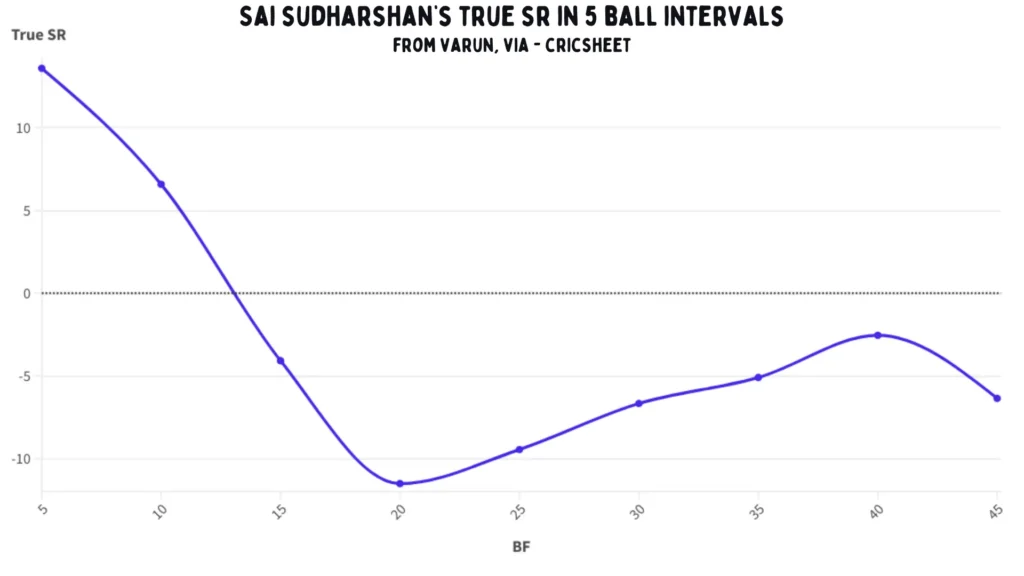
We talk a lot about average in cricket, but there are other ways of looking at batters especially for consistency, like mean. Of course runs per dismissal is average, but runs per innings is mean. You see all the batters up the top are the best scorers, you can see Devon Conway, Heinrich Klaasen and Shubman Gill, these are all major stars. In fact, all the players up the top end of this are pretty famous, and then you have Sudharsan. His mean score is 37, higher than Virat Kohli and David Warner.
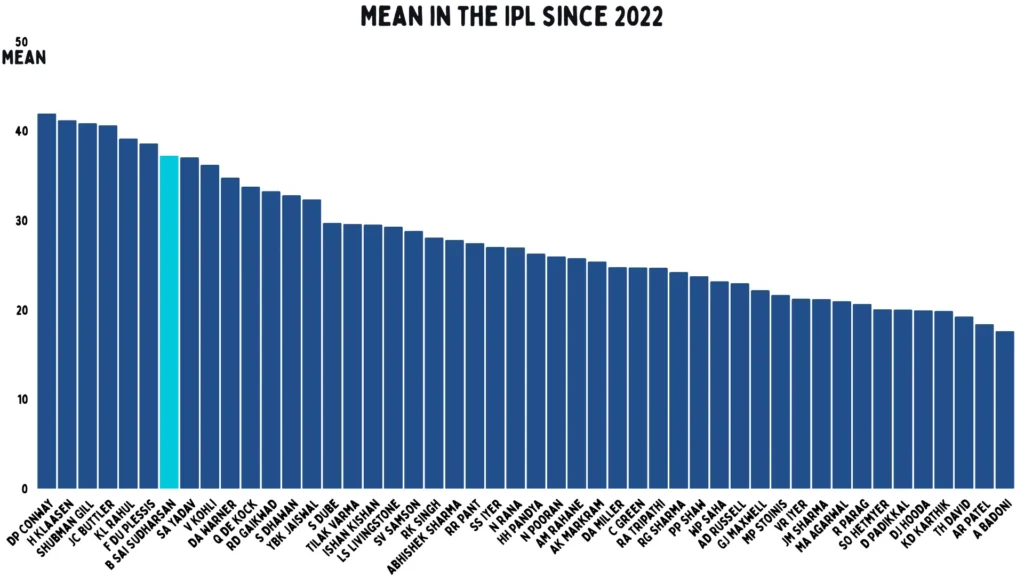
Let’s add something else: standard deviation. Most players follow a normal pattern when you look at them by mean and standard deviation. This is a decent method to work out how consistent players are. Sudharshan stands out here on his own. He is not up near the big scorers, and he is also nowhere near the hitters. He is his own man, enjoying his median score of 33 while the world burns.
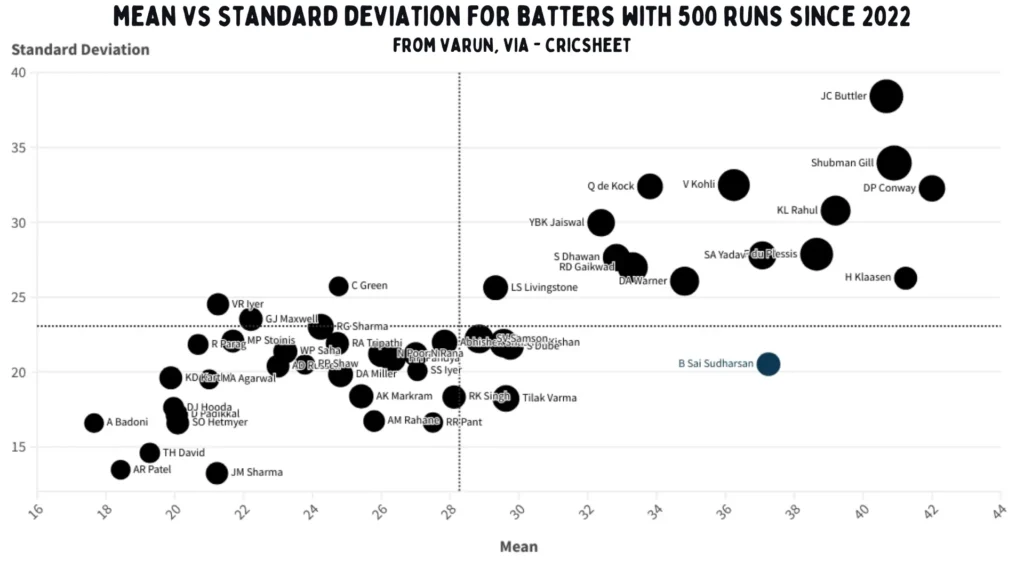
He has the mean of an elite top-order batter with a standard deviation of a number seven. You can see how different he is than other players, a complete league of his own making over here.
Watching Venkatesh Iyer is a rollercoaster, you have no idea what he is going to do from innings to innings. So you will have mixed thoughts on him depending on which knocks you see. If you have seen Sudhasrshan bat once, you have seen him every single time.
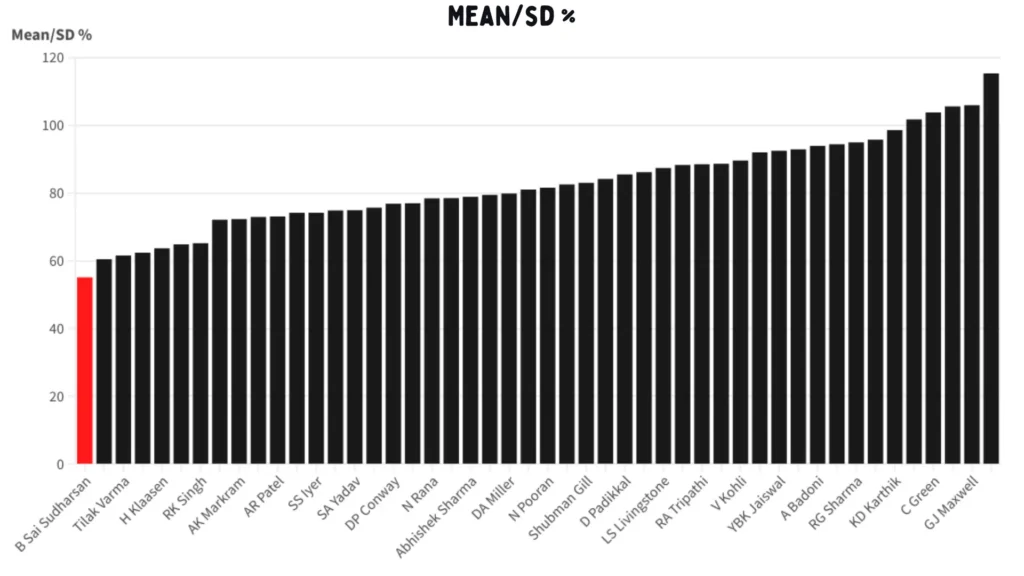
The normal amount is 80, so it shows just how far off he is from anything basic. It also means if you want to say he is the meanest player in the IPL, you can.
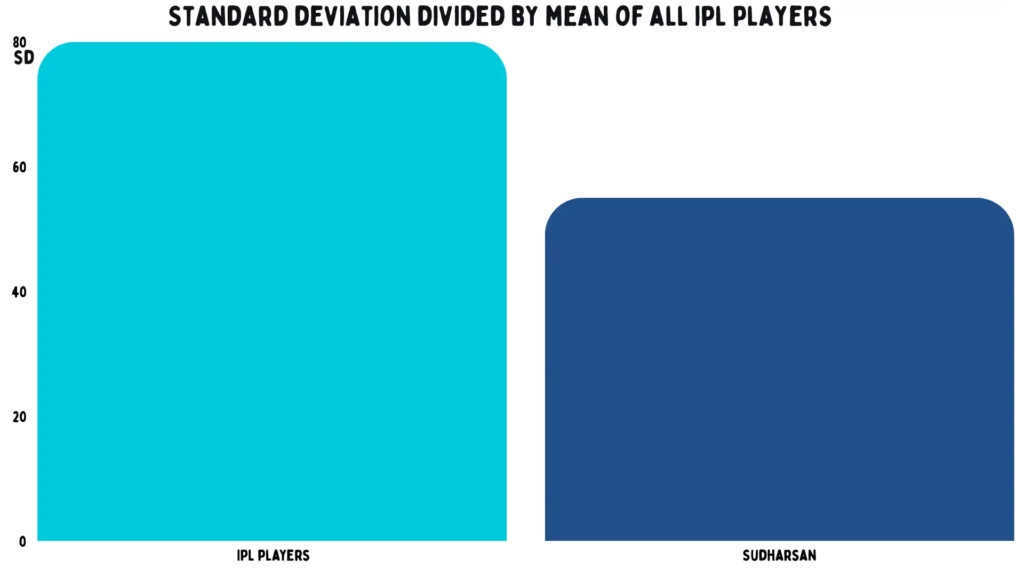
He has found a method of scoring between 20 and 40 in almost every innings. He rarely goes beyond that, like he has a glass ceiling where he has to find a way to leave the crease.

One time Sadharsan went past 40 runs, and… he decided to retire out.
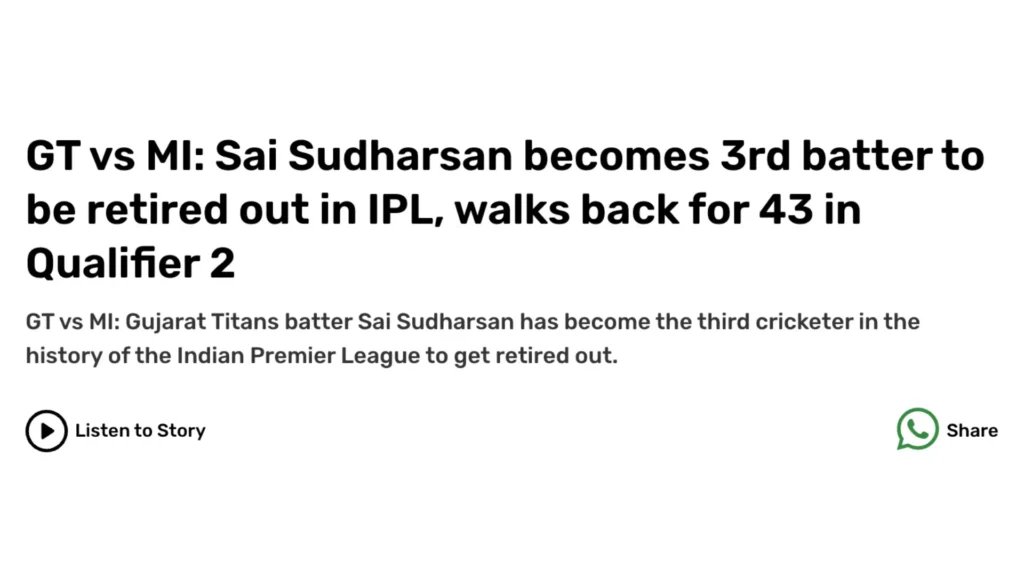
That is the kind of player we are dealing with here. There is nothing really like him. It’s as if his job is to make sure the batting order doesn’t collapse. He is not an anchor. That is for players who bat deep into the innings. He is not a dasher either.
He is one of the few with a negative true strike rate among the guys with more than 500 runs. So he should be an anchor, but he has this artificial ceiling that stops him going on.
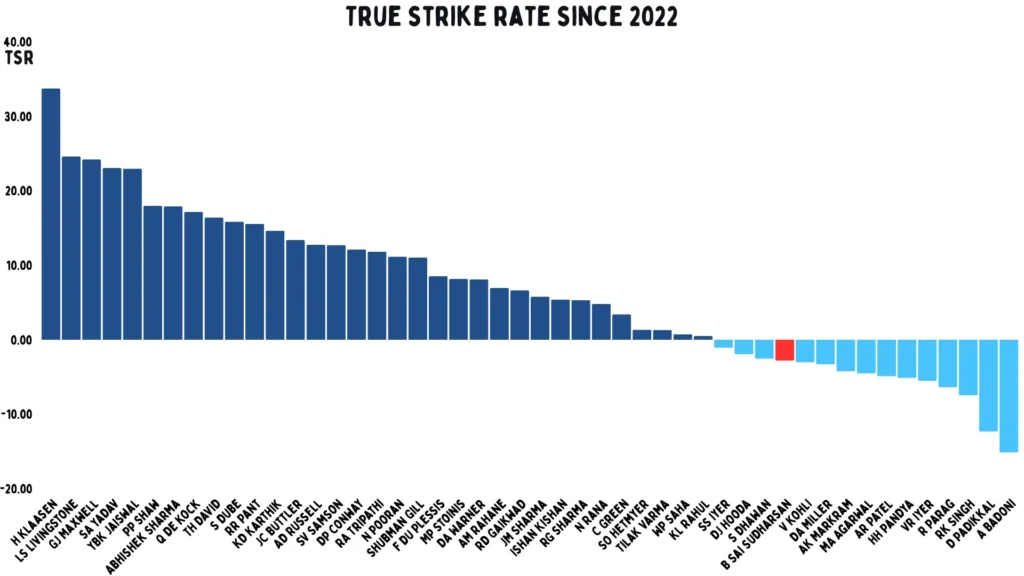
You look at him here, and he seems a little more normal because other players are near him. But it also shows that he is not elite at anything. His true average is good but not life-changing.
But what is interesting is how much better against spin than seam he is. Against the quicks, he doesn’t stay in that long or score quick. With the turning ball he is slightly slower than par, but doesn’t get out.
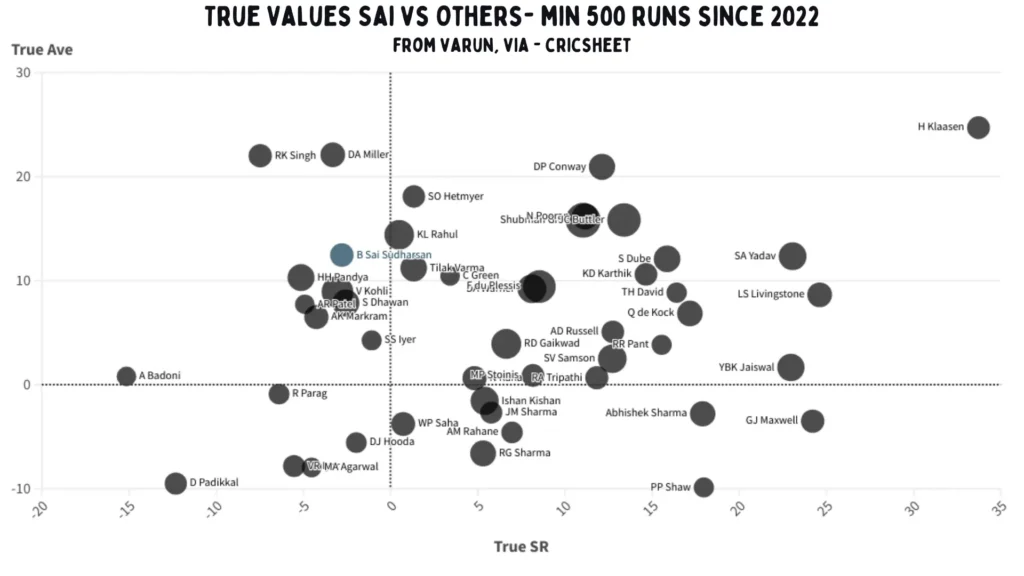
This gets more interesting when you slice this by each bowling type.
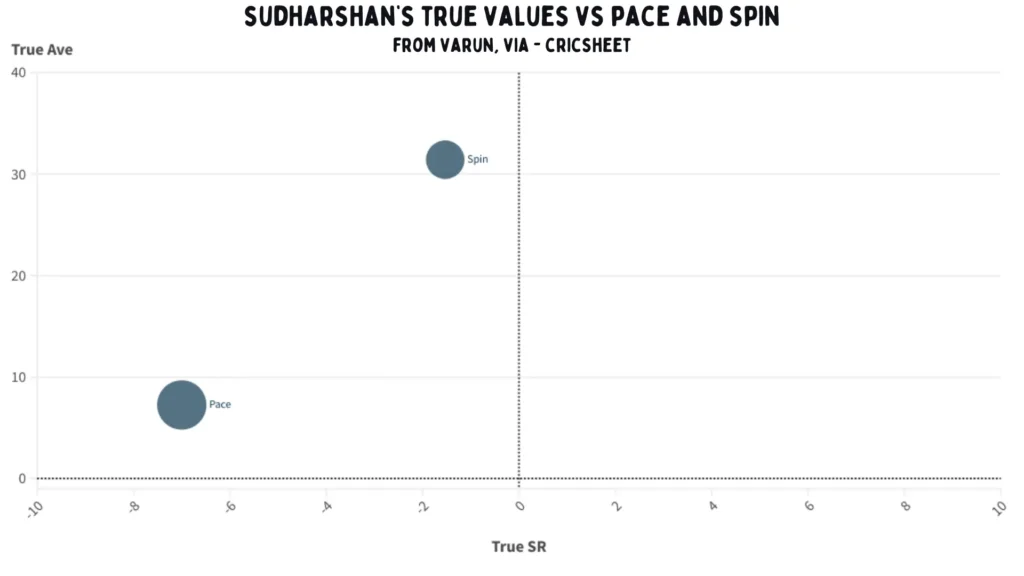
As a left-hander, he destroys legspin – fine, we can work with that. But look at his record against left-arm finger spin. This is a really slow record for that kind of bowler. Obviously, they don’t get him out, but he’s not doing well.
What really sticks out is him versus right-arm pace. It’s rare to see a player struggle to score quickly against the thing you face the most. Bowling machines and throwdowns are all geared towards right-arm seam. He has a better record against offspin when it comes to staying in and scoring than right-arm seam. For a left-hander that is just bizarre. So this really cements him as a spin specialist.
This probably explains why he scores between 20 and 40 so much. Because eventually he will have to face quicks again.
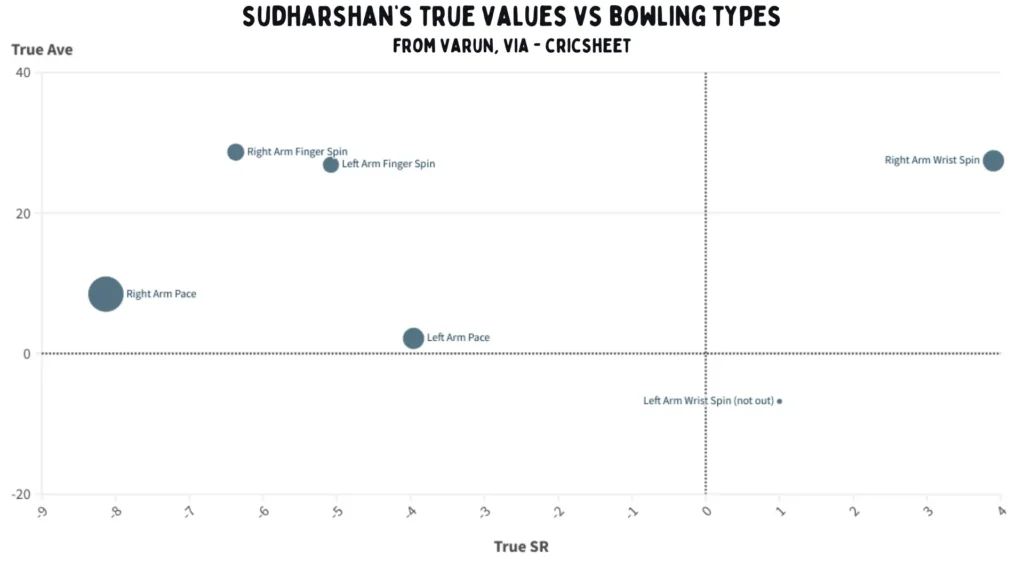
Because of that, he usually bats at first drop where he can stay in against pace at the end of the powerplay and then face the turning ball straight after. So it makes sense to use him that way.
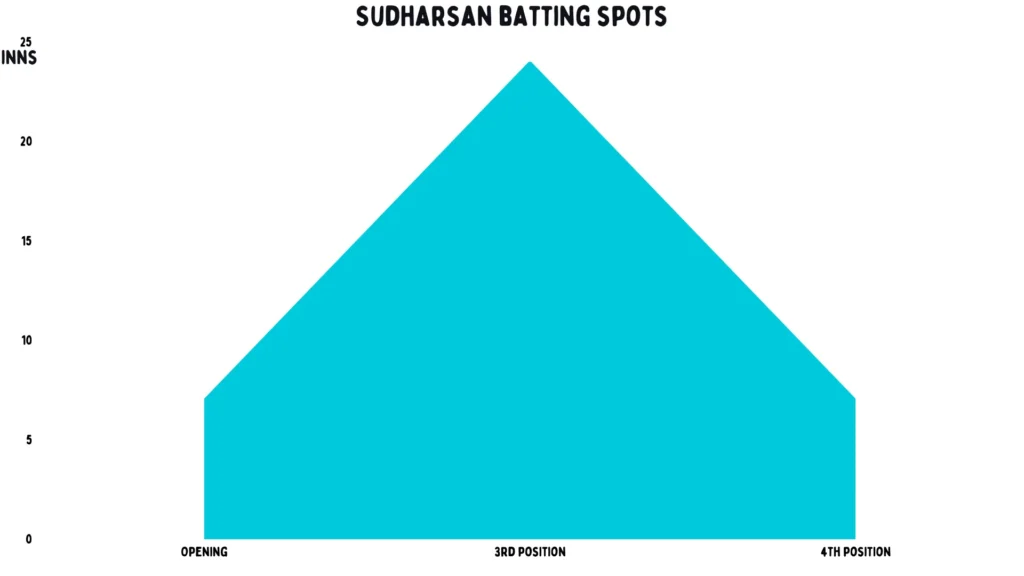
He is being used for overs five to twelve. He is like the spinner you bring on at the end of the power play and is finished by the 12th over. He is a single-usage bat. He cannot open, and he can’t bat late. His main skill is strike-rotating the spinners so you don’t lose a wicket. I have seen spin specialists before, but usually, they can score so quickly against spin that it makes sense. That isn’t his job. He is more like a more consistent version of when R Ashwin pinch blocks. His job is just to handle spin and then disappear.
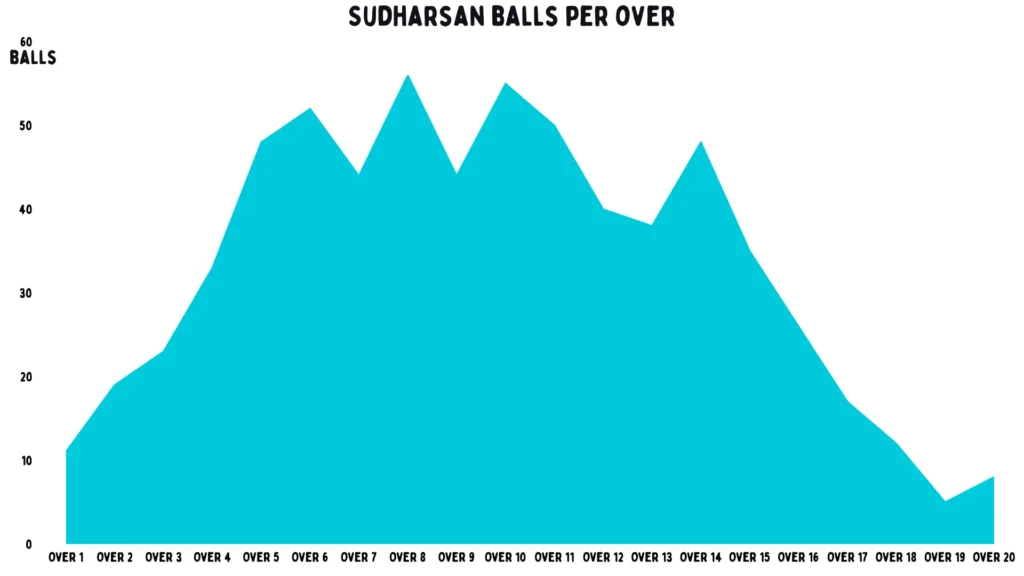
This batter will self-destruct when pace is bowled.
This means he has a record in which a huge percentage of his innings end up between 20 and 60. This makes sense because he always gets a start and has no power to kick on, especially against pace.

But this is the one that shows what a giant weirdo he is. You can see Tilak Varma is up here, another incredibly consistent player who hits the ball hard. Shivam Dube is another middle-order impact batter. Jitesh Sharma and Rinku Singh are two more slappers of the ball – the sorts of players that Sudharsan is nothing like. He probably feels uncomfortable just looking at their strike-rates.
But honestly, no matter how we looked at him, he was unique. He is a great starting, terrible finishing single-usage spin player who plays in an incredibly unique way with an artificial glass ceiling.
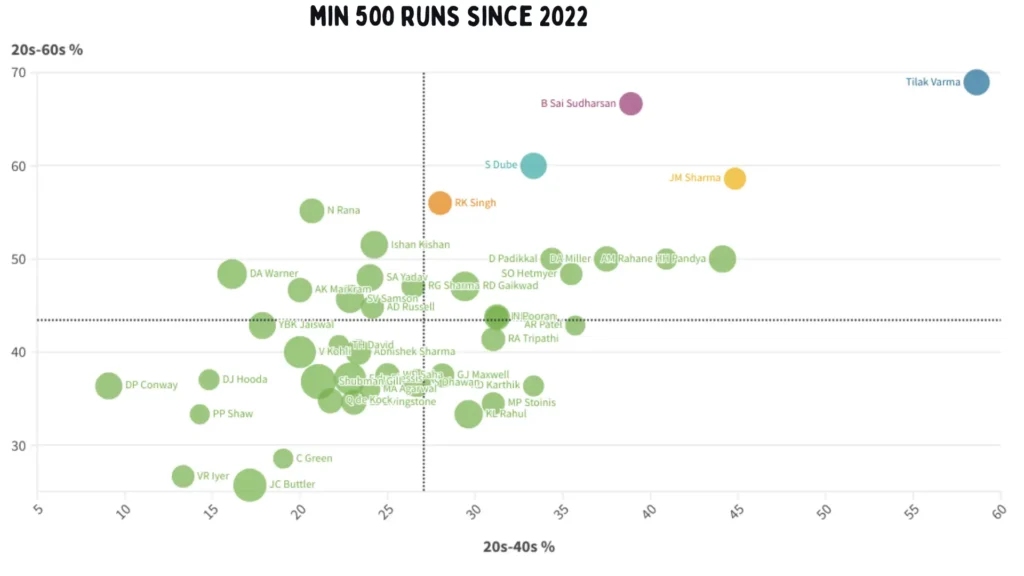
So I just wanted to show you his first-class record. He has an average of 38 from 29 innings far. Here he makes hundreds, which is less surprising as he can clearly bat, but ten of his innings are single figures, more than his entire List A and T20 career combined, from way fewer matches.
The man is a middle-overs renegade. He does not play by your rules.
